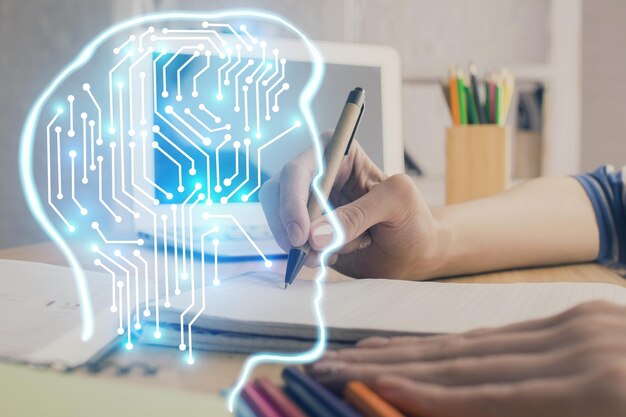What Are The Popular Deep Learning Applications?
by Abdul Aziz Mondal Technology Published on: 10 January 2024 Last Updated on: 15 January 2024

Deep Learning, a subdomain of machine learning, employs artificial neural networks—algorithms inspired by the human brain—to glean insights from vast datasets. It fuels facial recognition, speech recognition, and image classification applications.
Operating at the intersection of neuroscience and machine learning, deep learning algorithms extract high-level abstractions from data, making it a potent tool for diverse applications.
This article explores a range of deep learning applications, showcasing their versatility and impact in deciphering complex patterns within data.
A career in deep learning offers exciting opportunities in the fast-evolving tech landscape. Pursuing a deep learning course equips individuals with essential skills to navigate this dynamic field. With hands-on training, participants gain expertise in neural networks, enabling them to tackle real-world challenges.
The course provides insights into cutting-edge applications, positioning learners to contribute to advancements in artificial intelligence. In a landscape where deep learning drives innovations, such a course becomes a valuable pathway for professionals seeking a fulfilling and impactful career at the forefront of technological evolution.
What is Deep Learning?
Deep Learning is a subset of machine learning that typically uses artificial neural networks to mimic the human brain’s structure and function. These algorithms, comprising multiple layers (hence ‘deep’), learn intricate patterns from vast datasets.
Unlike traditional machine learning, deep learning autonomously extracts hierarchical features, enabling an understanding of complex relationships within data. Widely applied in facial recognition, speech processing, and image analysis, deep learning revolutionizes artificial intelligence, offering unparalleled capabilities for tasks requiring sophisticated pattern recognition and decision-making in the evolving technological landscape.
Top Applications of Deep Learning

Deep learning yields positive results by autonomously extracting intricate patterns from vast datasets, enabling advanced applications like image recognition and language processing.
Its ability to discern complex relationships within data facilitates more accurate predictions and decision-making, enhancing efficiency and performance across various domains, from healthcare to finance and beyond.
1. Self-Driving Cars:
In self-driving cars, deep learning is applied for perception, enabling vehicles to interpret and respond to their surroundings. Convolutional Neural Networks (CNNs) process real-time data from sensors, like cameras and lidar, to recognize objects, pedestrians, and road signs. Recurrent Neural Networks (RNNs) aid in decision-making by predicting the movements of other vehicles and pedestrians. This fusion of deep learning technologies allows self-driving cars to navigate safely, make real-time decisions, and adapt to dynamic traffic scenarios.
2. Natural Language Processing:
Deep learning is employed in Natural Language Processing (NLP) to comprehend and generate human-like language. Recurrent Neural Networks (RNNs) and Transformer models process sequential data, capturing context in sentences. Word embeddings and pre-trained language models like BERT enhance understanding of semantic relationships. This enables applications like sentiment analysis, language translation, and chatbots to interpret and generate text with improved accuracy, making deep learning a cornerstone in advancing the capabilities of Natural Language Processing.
3. Virtual Assistants:
Deep learning is crucial for Virtual Assistants, enhancing their natural language understanding and speech recognition capabilities. Models such as recurrent neural networks and transformer architectures process user queries, enabling virtual assistants like Siri and Alexa to comprehend context, provide accurate responses, and continually improve their performance through machine learning algorithms.
4. Visual Recognition:
Deep learning excels in visual representation through Convolutional Neural Networks (CNNs). CNNs autonomously learn hierarchical features from images, enabling tasks like object detection, image classification, and facial recognition. These models capture intricate visual patterns, enhancing accuracy and efficiency in interpreting and understanding visual content across various applications.
5. Fraud Detection:
Deep learning proves instrumental in fraud detection through various methods. One approach involves training a model to recognize established fraud patterns by inputting a dataset of known fraud cases. The model subsequently identifies new cases exhibiting similarities to those in the dataset, effectively flagging potential fraudulent activities. This application underscores the effectiveness of deep learning in enhancing fraud detection capabilities.
6. Robotics:
Deep learning algorithms play a crucial role in the robotics industry, allowing robots to autonomously learn and enhance their skills, improving task performance without human intervention. These algorithms enable robots to navigate unknown environments, identify and grasp objects, and interact with humans, making robotics a prominent application of deep learning.
7. Healthcare:
Deep learning finds application in diverse fields, notably in healthcare, where its potential is substantial. The healthcare sector benefits from deep learning by creating predictive models for disease diagnosis, prognosis, and treatment recommendations. Additionally, deep learning contributes to advancing imaging techniques, exemplified by its role in reconstructing images from medical scans like MRI and CT, showcasing the technology’s transformative impact on enhancing healthcare diagnostics and patient care.
8. Personalization:
Deep learning algorithms excel at learning from unstructured and unlabeled data, making them ideal for personalization applications. In scenarios with abundant but challenging-to-label data, deep learning proves effective. It enables the creation of models that learn to personalize content for individual users. For instance, a deep learning model could adeptly recommend articles or products based on a user’s past behavior, showcasing the adaptability and efficacy of deep learning in enhancing personalized experiences.
9. Detecting Developmental Delay in Children:
Early diagnosis and treatment of speech, autism, and developmental disorders significantly impact children’s well-being. Notably distinct from traditional machine learning, deep learning plays an integral role in solving these challenges.
MIT and Massachusetts General Hospital researchers developed a deep learning system to identify language and speech disorders in children before kindergarten. By considering factors like age, gender, and acoustic features, this system demonstrates the potential of deep learning in proactively detecting and addressing critical issues affecting the quality of life for differently-abled children.
Conclusion
In exploring popular deep learning applications, it’s evident that this technology is reshaping industries, from healthcare to finance. As deep learning continues to drive innovation, staying informed is crucial. Enrolling in a deep learning course becomes a strategic move to stay at the forefront of technological advancements.
It offers hands-on experience, insights into real-world applications, and proficiency in cutting-edge technologies. Navigating the dynamic landscape of deep learning is not just about keeping pace; it’s about leading transformative initiatives and contributing to the future of technology, making a deep learning course an invaluable investment in career growth and expertise.
Read Also:



































































































